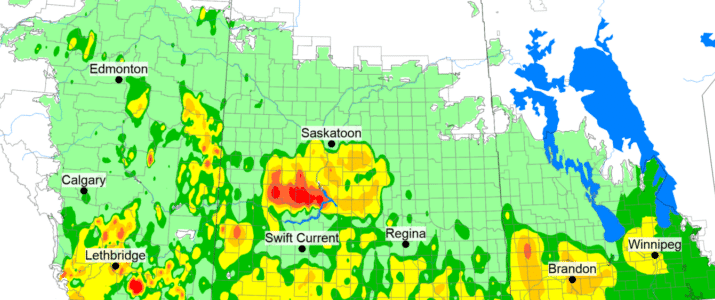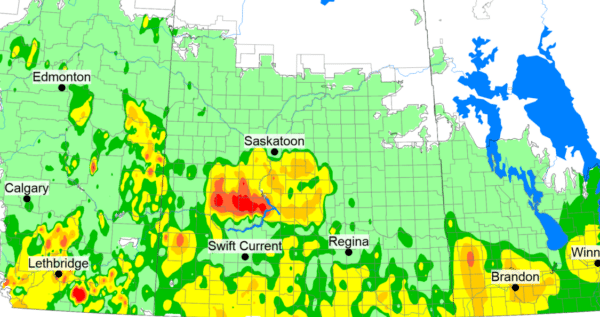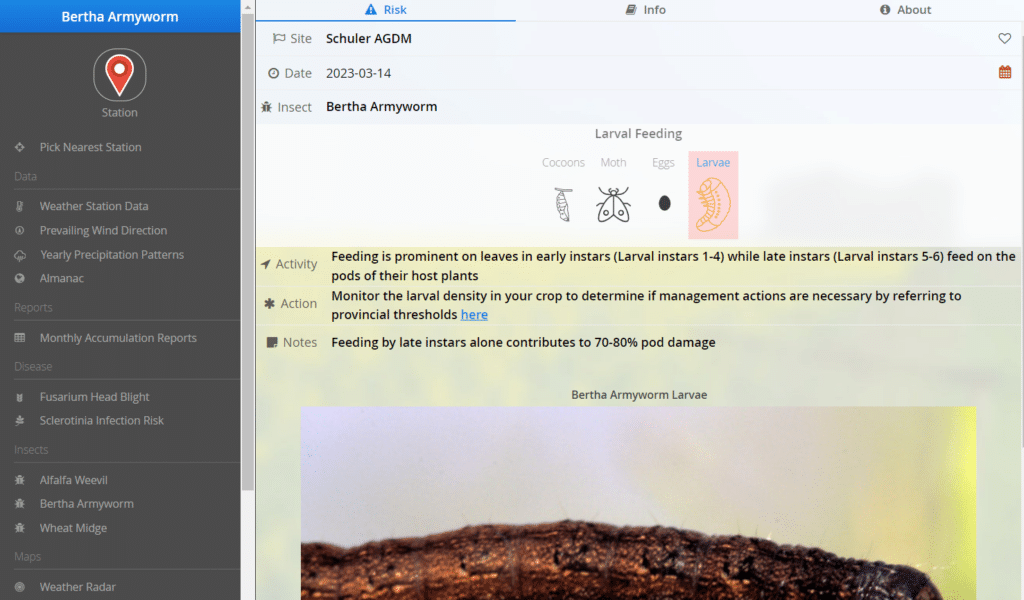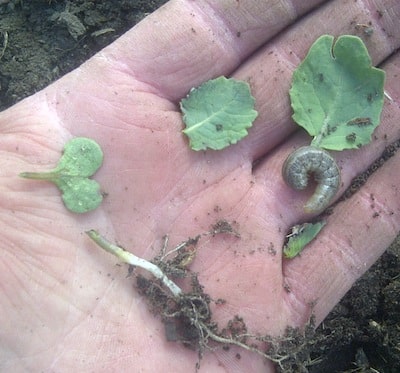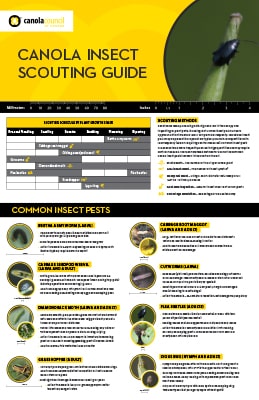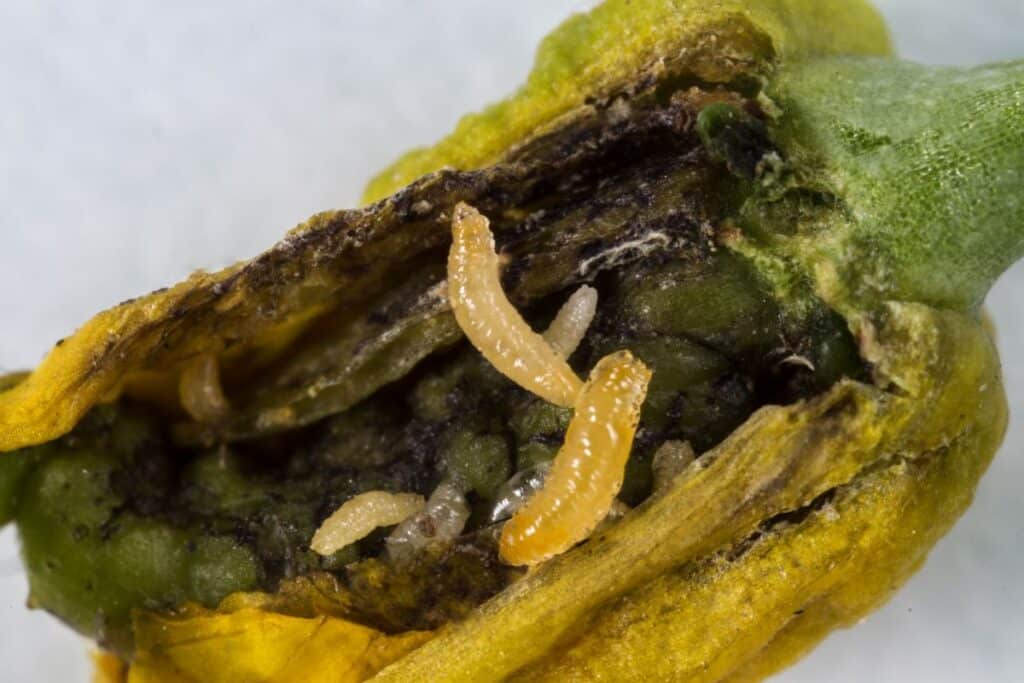Warm spring temperatures mark the beginning of the lifecycle for many annual plants. Many insects will also begin or continue their lifecycle, depending on the stage that they may have overwintered in. As the first step in considering an insect management plan for this year, it is helpful to recall what happened last year. To refresh yourself on the weather conditions which contributed to insect numbers last year, see the ‘Environmental conditions…’ section of the Canola disease survey recap to inform risk management in 2023 blog. Then view the survey results maps in this blog, along with a grasshopper forecast maps.
The uniqueness of insect species impacts the number of generations they have, the timing and method of feeding and the pheromones they are attracted too. Insects are also impacted differently by environmental factors, which can influence their predictability. For example, bertha armyworm has multi-year population cycles to consider for potential estimates, while diamondback moth populations are strongly impacted by wind patterns coming up from the U.S. which impact its annual populations. So, each insect requires unique monitoring efforts, at the suitable time in their lifecycle, and with the appropriate technique, to determine an accurate representation of the population and the impact it may be having on crops.
Fortunately, the Prairie Pest Monitoring Network (PPMN) has been involved in developing monitoring protocols and in coordinating an insect pest surveillance program for field crops in the Prairies. The PPMN is comprised of field crop entomologists who conduct research and actively monitor insect pest populations to support crop protection programs on the Canadian prairies. It includes researchers from Agriculture and Agri-Food Canada, Manitoba Agriculture, Saskatchewan Ministry of Agriculture, Alberta Agriculture and Irrigation, and university researchers. Industry stakeholders provide regular input and valuable insight at annual PPMN working group meetings. The resulting survey results maps and showcased below.
Apply this research on your farm
- Subscribe to the PPMN e-newsletter to get weekly Prairie insect information.
- Volunteer access to your farmland for insect surveys in your province in 2023.
- Use listed resources to ensure you/your agronomist use suitable scouting technique, proper identification and current thresholds to make the informed decisions, potentially involving these Insecticide Options in 2023.
- In Alberta, check out these insect prediction models and the real-time maps of the Alberta Insect Pest Monitoring Network.
- Remember to watch out for swede midge and canola flower midge while scouting – and submit samples if you find it.
- Learn more about the Field Heroes in your crops, so you can easily identify them too.
2022 Prairie pest insect surveys
PPMN collaborators and contributors in 2022 collected >5000 samples while conducted surveys and monitoring for grasshoppers, bertha armyworm, wheat midge, wheat stem sawfly, pea leaf weevil, cabbage seedpod weevil, and diamondback moths in 2022. The PPMN acknowledges the considerable and valuable contribution that all collaborators and volunteers made.
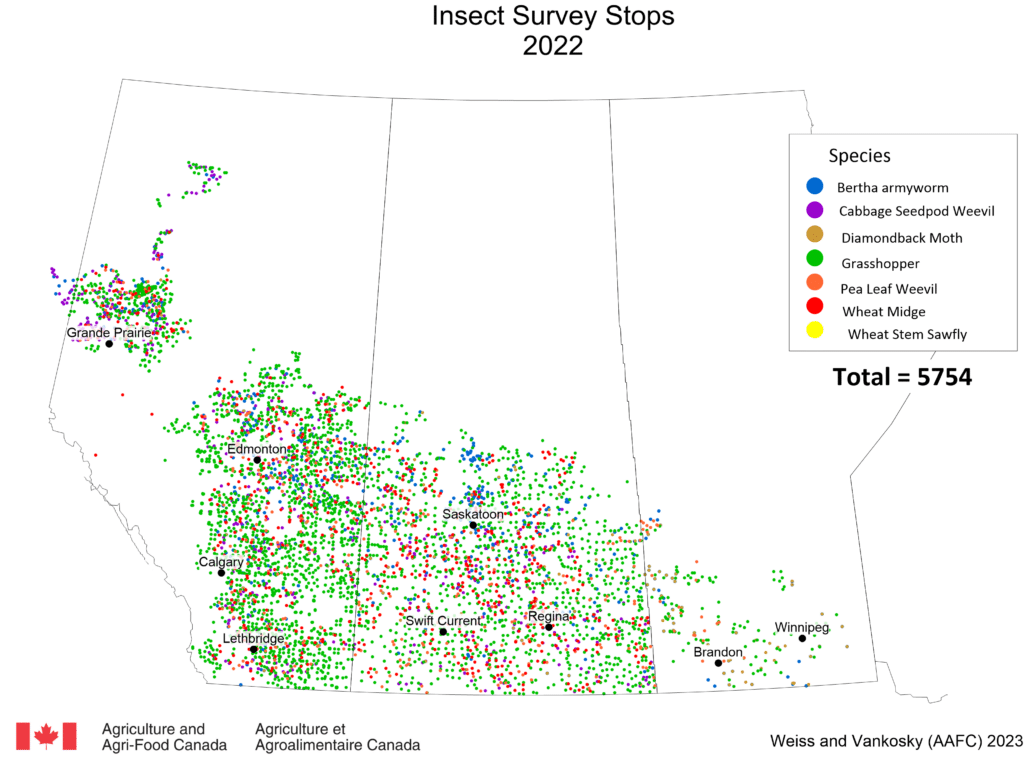
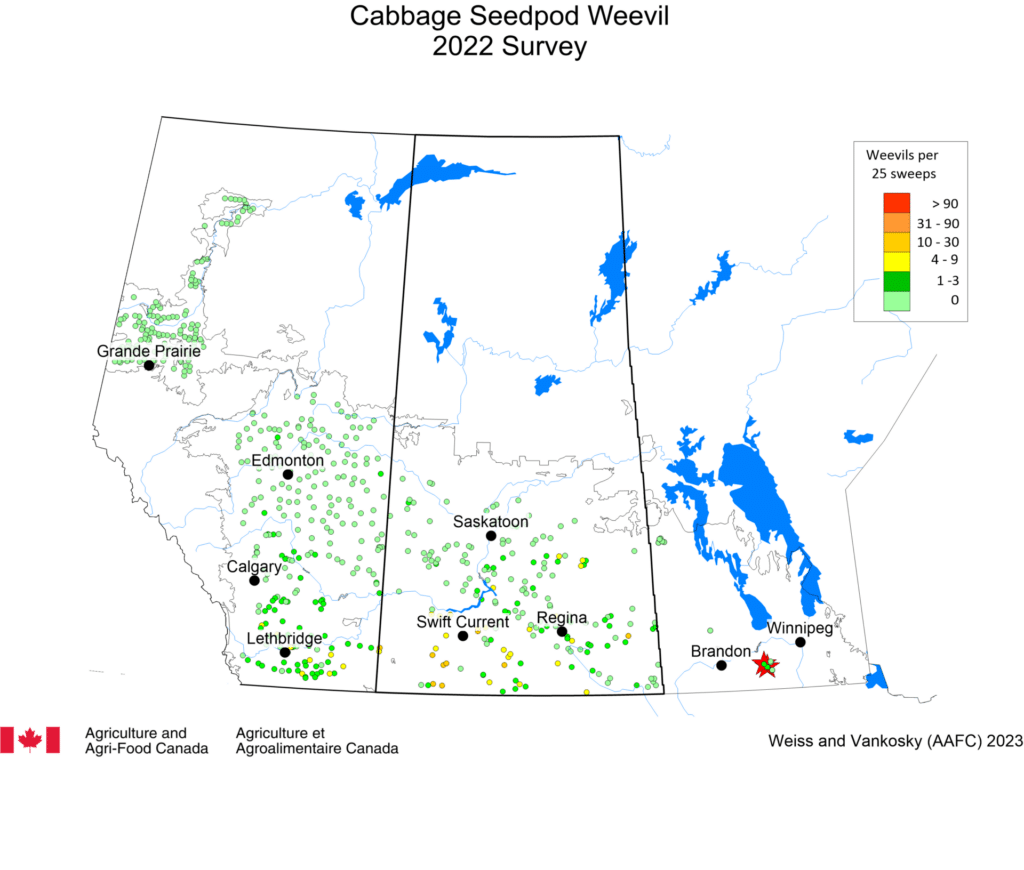
2022 BAW, CSPW and DBM survey results
Canola pest insect survey results from these monitoring efforts are provided in the Prairie Pest Monitoring Network’s results of 2022 surveys and monitoring post bertha armyworm, cabbage seedpod weevil, diamondback moth and grasshopper maps.
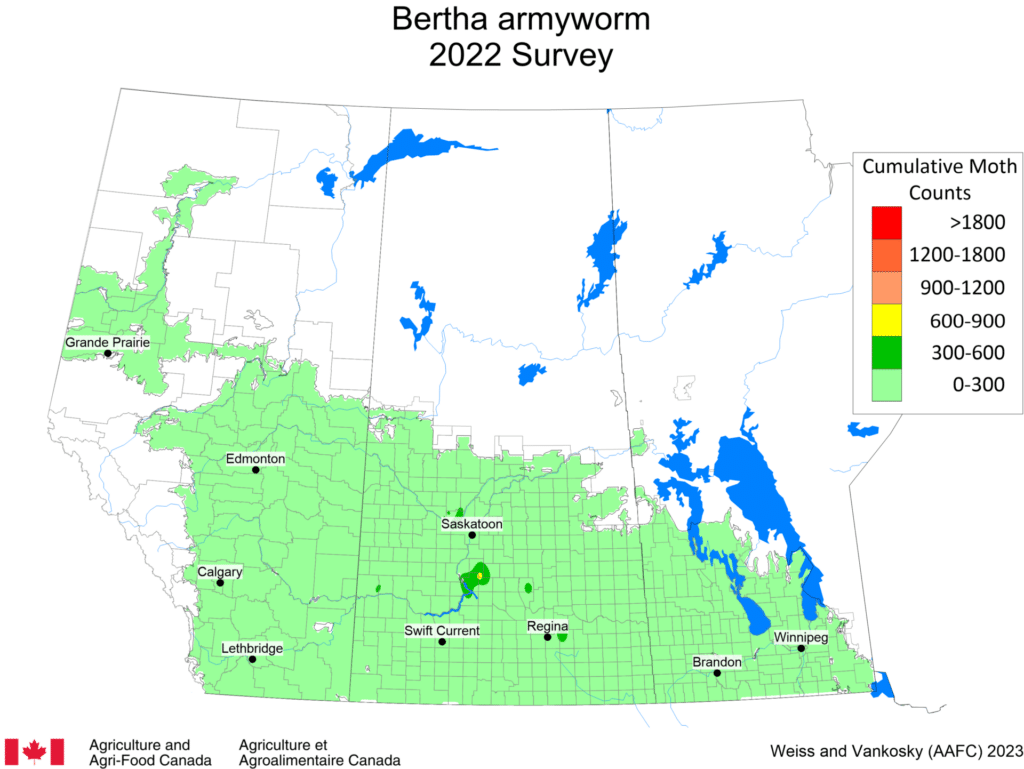
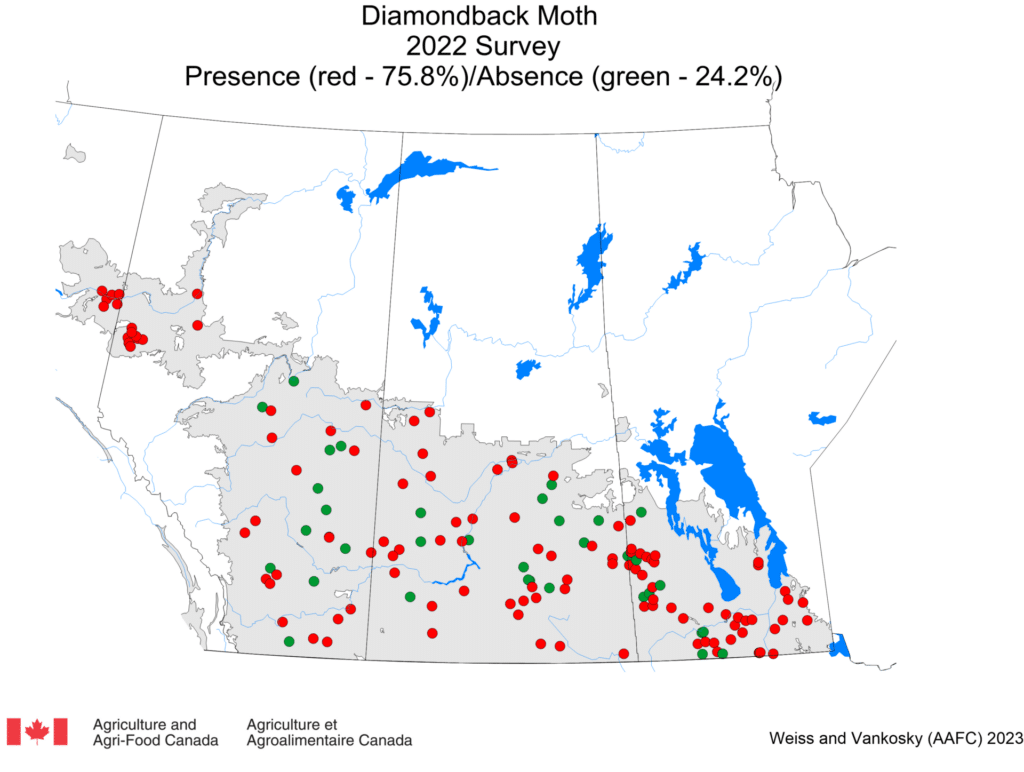
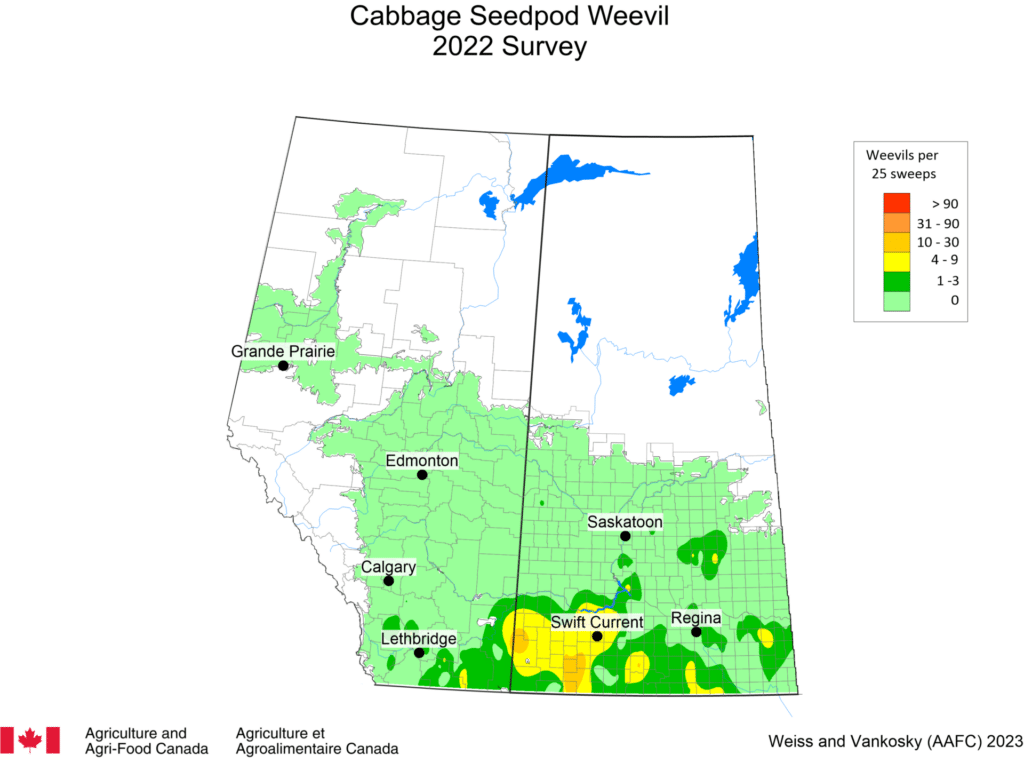
Grasshoppers
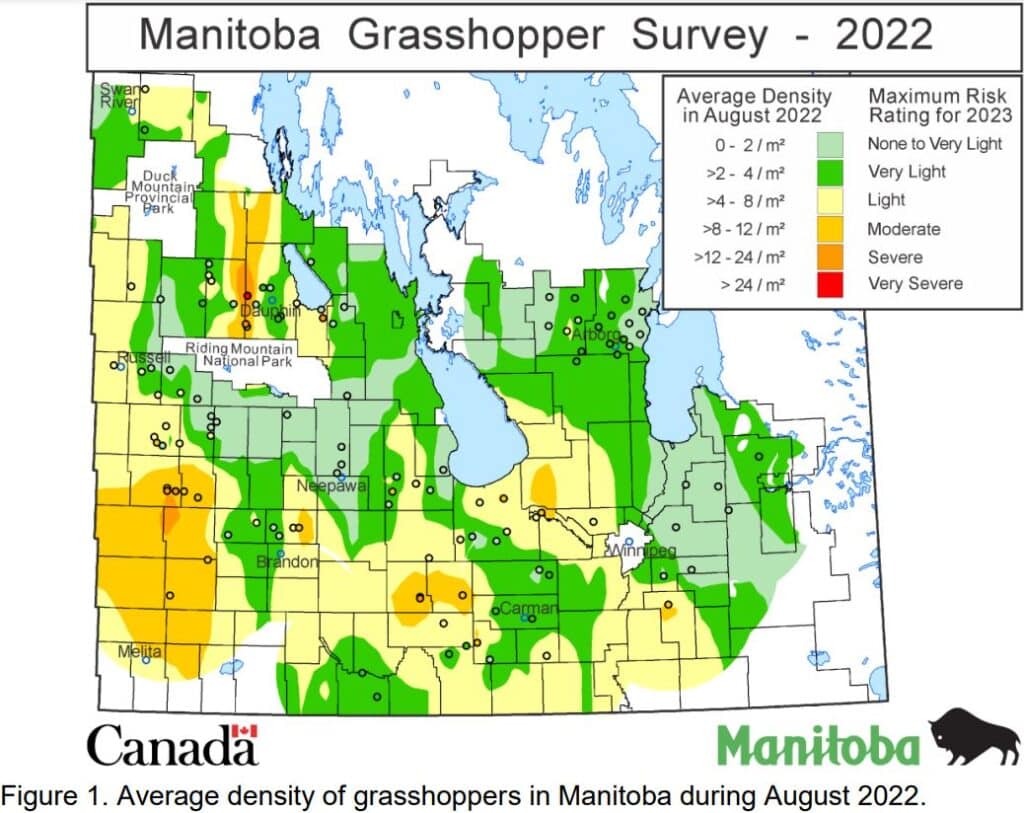
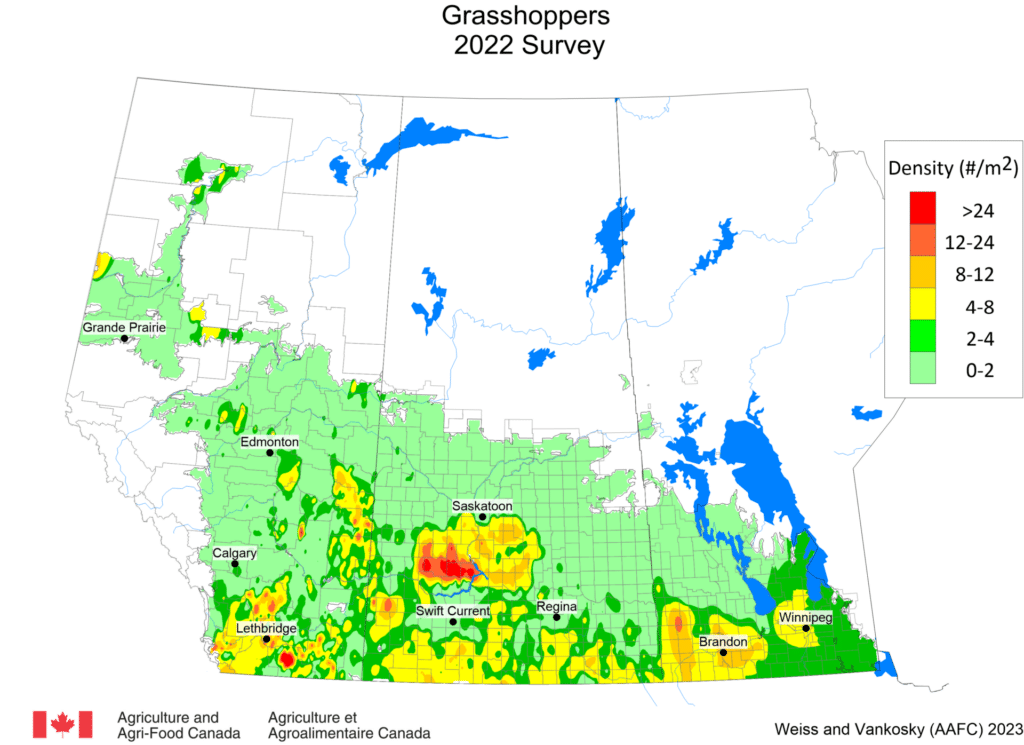
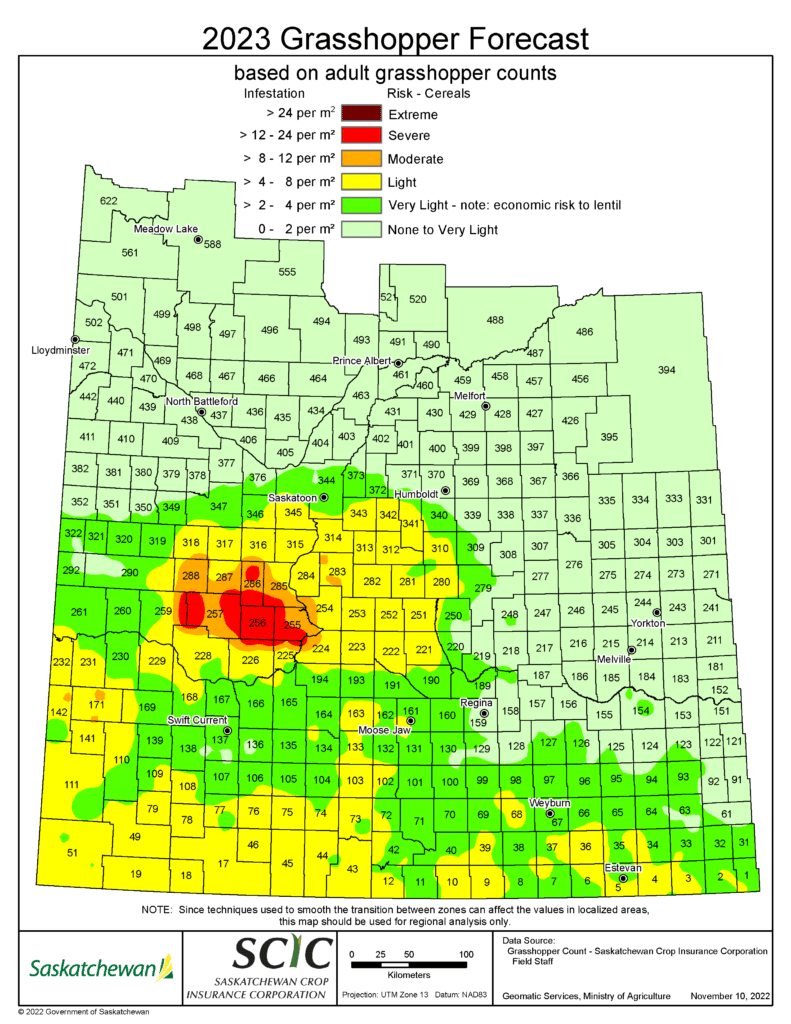
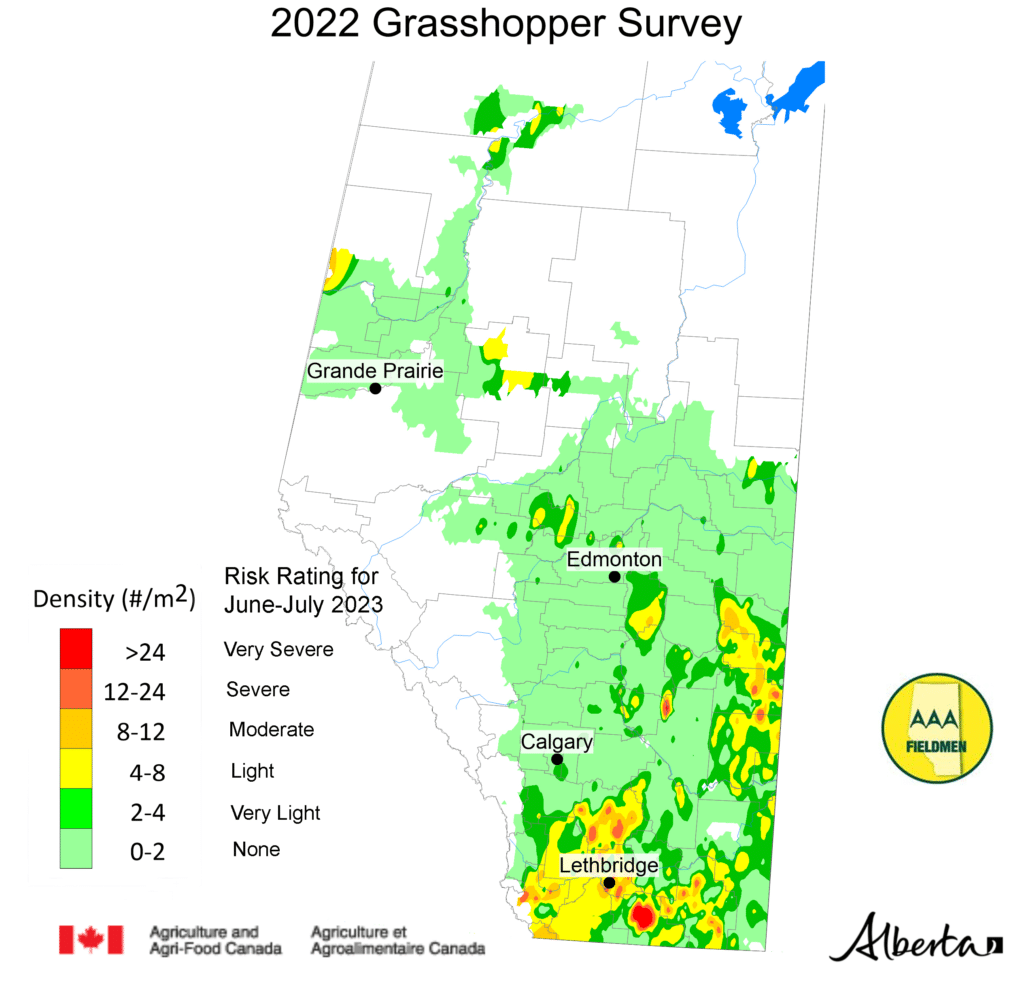
Insect prediction models in Alberta
While the PPMN fills an important gap, a need for a regional/Alberta-wide forecasting, monitoring and information delivery system was identified to benefit both the environment and Alberta growers in their insect management efforts. The Development and implementation of a weather-based, near real-time, crop insect pest monitoring/prediction model and program for Alberta addressed this demand.
Through the course of this project, provincial weather-based monitoring/prediction models for three economically significant insect pests in Alberta: bertha armyworm, wheat midge and alfalfa weevil, and their natural enemies, have been developed. The results of these models have been integrated and coded to create the Alberta Weather-based Insect Pest Prediction (AB-WIPP) mobile-friendly web pages available at the Alberta Climate Information Services (ACIS) website: weatherdata.ca. Growers and industry member can now view the risk/threat, life cycle, outbreak cycles and more on bertha armyworm, wheat midge and alfalfa weevil in their area.
Learn more by flipping through this Alberta Agriculture and Irrigation presentation.
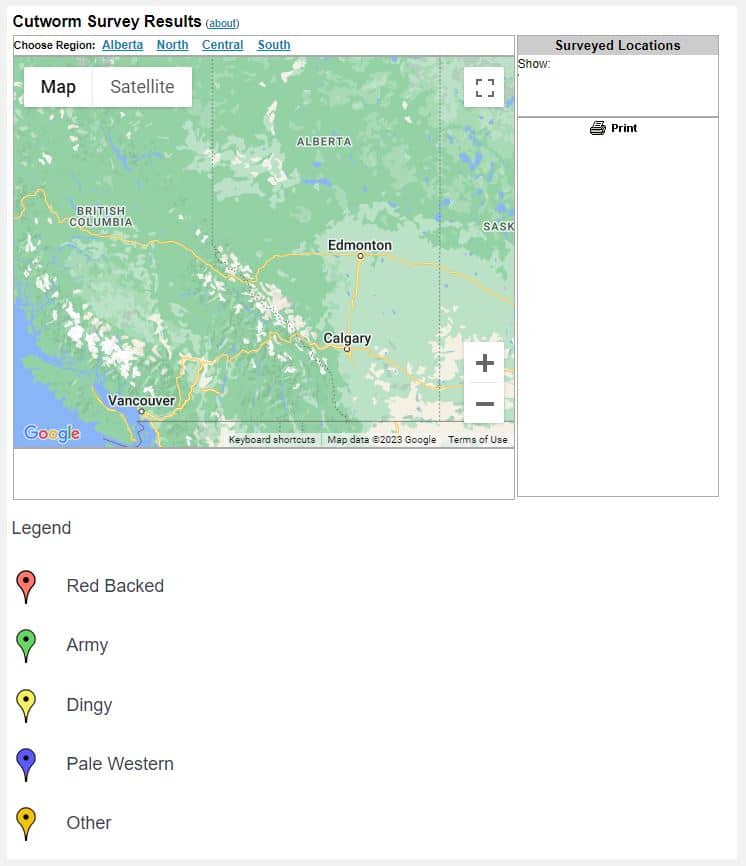
Also utilize these real-time maps from the Alberta Insect Pest Monitoring Network:
Support surveying efforts in your province
- Saskatchewan – Volunteer access to your farmland for insect, plant pathogen and disease surveys in 2023, please visit Pest Monitoring In Saskatchewan.
- Alberta – Sign up by emailing Alberta Agriculture and Irrigation to allow insect surveyors access to your land in Alberta. This also qualifies you to receive the results of the fields visited.
- If any of invasive insects, including bronzed blossom pollen beetle, brown marmorated stink bug, Japanese beetle, lesser grain borer or western bean cutworm are suspected, capture them in a container, record where you captured them, and freeze them. Then contact bugs.r.us@gov.ab.ca
- If you find damage to canola plants that looks like it may have been caused by swede midge, also collect the sample and email bugs.r.us@gov.ab.ca
- Manitoba – subscribe to receive Manitoba Crop Pest Updates as they are posted.
Insect monitoring tips

- Use accurate protocols – Use these insect pest monitoring protocols, featured on the Western Forum on Pest Management website, which also features Annual Insect Situation Reports.
- Ensure proper identification – Use these guides to help you accurately identify pest insects:
- Canola Council of Canada’s Canola Insect Scouting Guide
- AAFC’s Field Crop and Forage Pests and their Natural Enemies in Western Canada guide
- AAFC’s Guide to pest wireworms in Canadian Prairie field crop production
- AAFC’s Cutworm Pests of Crops on the Canadian Prairies
- Watch for beneficial insects too – Use the Field Heroes scouting guides to ensure helpful crop insects aren’t mistaken for hurtful ones
- Follow thresholds and control recommendations using these guides:
- The Canola Council of Canada’s Canola Insect Scouting Guide and Canola Encyclopedia
- The Western Committee on Crop Pests Integrated Control of Insect Pests of Crops guide
- SaskCanola Insecticide Options in 2023 reference sheet
Keep an eye out for canola flower midge too!
As noted in the Monitoring the canola flower midge with pheromone-baited traps study, continued monitoring and vigilance for this species is recommended, as its full pest potential is yet to be determined.
Wrapping in December 2022, this project yielded a reliable, pheromone-monitoring system that can monitor populations of canola flower midge. It also determined that both buds/flowers and occasionally pods can be infested by this insect. Although short-lived (up to five days), the midge emergence is prolonged over the summer when canola plants are susceptible to infestations.
More specific findings from this research include:
- The number of male C. brassicola captured on pheromone-baited traps was not predictive of damage in the field, but in 1 of 2 years there was a significant relationship between the total number of midges captured and the total number of galls sampled over the season, according to data in this project.
- While there wasn’t a large disparity between the sex of emerging adult C. brassicola midges, a higher proportion of those able to live for more than one day are female rather than male. The laboratory midges live for five days or less.
- Meteorological conditions measured in this study did not have an impact on the number of midges captured.
- There was a significant damage edge effect, which will be useful information when designing future management strategies and, if warranted, management could potentially focus on the field edges.
- No alternative hosts were infested over the course of the study; however, under certain conditions C. brassicola are capable of ovipositing and larvae develop in pods.
Published March 31, 2023

